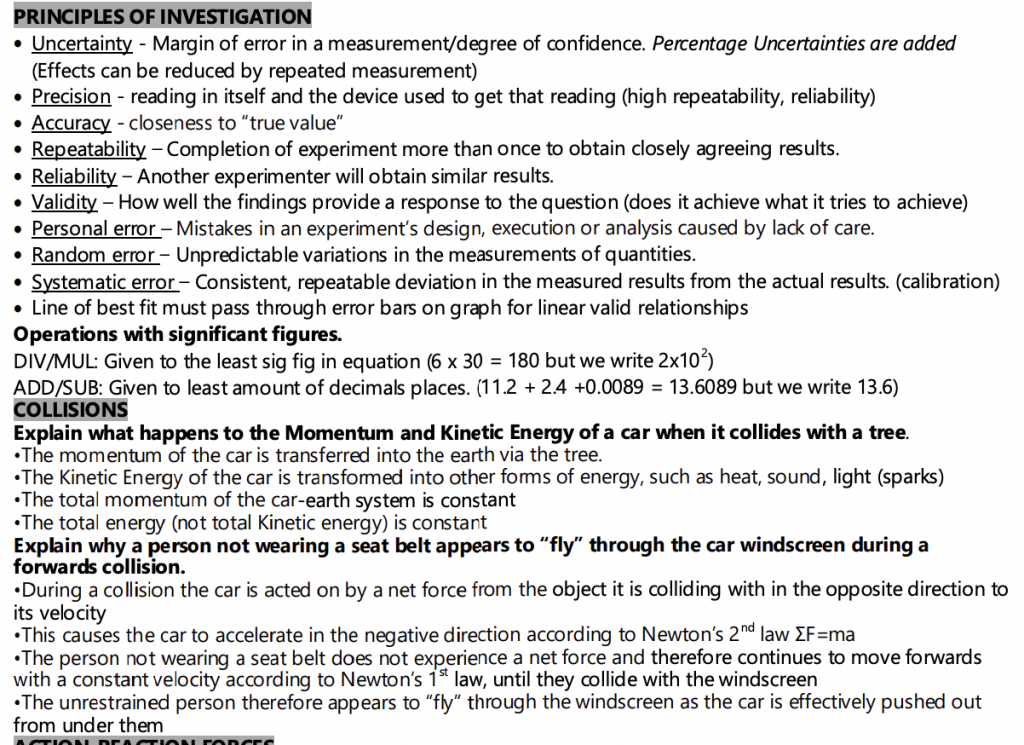VCE Physics Units 3 and 4 Cheat Sheet
Summary:
The principles of investigation involve various factors such as uncertainty, precision, accuracy, repeatability, reliability, validity, personal error, random error, and systematic error. Significant figures are used in mathematical operations. When a car collides with a tree, its momentum is transferred to the earth, and its kinetic energy is transformed into other forms of energy. A person not wearing a seat belt appears to “fly” through the car windscreen during a collision because of the net force acting on the car and the person’s inertia. Action-reaction forces occur between two separate objects and must be the same type. Satellites maintain a stable orbit due to the force of gravity acting on them. The gravitational field strength is 0 N kg-1 at the Earth’s centre due to the balanced gravitational attraction. For a geostationary orbit, the satellite must be over the equator, have an orbital period of 24 hours, and satisfy the relationship between centripetal and gravitational forces. Moving a satellite into a higher orbit increases its gravitational potential energy. Weightlessness occurs when an occupant is in a freely falling vessel, but the local gravitational field still influences them. The apparent weight of a passenger inside a car changes when travelling over a hill or valley due to the net force acting on them.
Excerpt:
VCE Physics Units 3 and 4 Cheat Sheet
PRINCIPLES OF INVESTIGATION
• Uncertainty – Margin of error in a measurement/degree of confidence. Percentage Uncertainties are added (Effects can be reduced by repeated measurement)
• Precision – reading in itself and the device used to get that reading (high repeatability, reliability)
• Accuracy – closeness to “true value”
• Repeatability – Completion of experiment more than once to obtain closely agreeing results.
• Reliability – Another experimenter will obtain similar results.
• Validity – How well the findings provide a response to the question (does it achieve what it tries to achieve)
• Personal error – Mistakes in an experiment’s design, execution or analysis caused by lack of care.
• Random error – Unpredictable variations in the measurements of quantities.
• Systematic error – Consistent, repeatable deviation in the measured results from the actual results. (calibration)
• Line of best fit must pass through error bars on the graph for linear valid relationships


Reviews